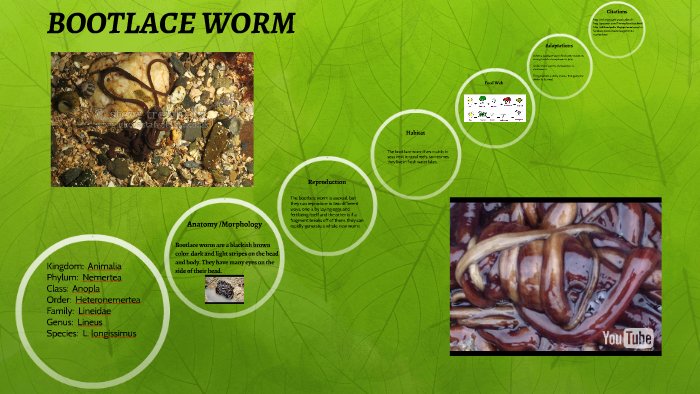
To put it simply, the nervous system of bootlace worms is like a control center for their entire body. It allows them to move, respond to stimuli, and communicate with other worms. This is crucial for survival, giving them the ability to react quickly if danger approaches or if they find something worth munching on. So, grab a cup of coffee, and let’s explore this weird and wonderful world!
What Are Bootlace Worms?
Bootlace worms are marine nemerteans, often referred to as ribbon worms. They can stretch up to 30 meters long, making them one of the longest invertebrates on the planet. While their length is impressive, it’s their unique anatomy that truly takes the cake. With a soft, gelatinous body and typically a bright color, they can be found in various coastal regions, often hiding in sand or mud.
These worms are predatory and often feed on small invertebrates like crustaceans. Picture a crafty hunter that can blend into its surroundings and strike when the moment is right. When it comes to locomotion, bootlace worms utilize a unique combination of muscular contractions and the nervous system to slither smoothly through various environments. This adaptability is a significant reason why they thrive in marine ecosystems.
The Structure of the Nervous System
At the heart of the bootlace worm’s incredible abilities is its nervous system. It’s quite different from animals like humans. Instead of a centralized brain, these worms have a simple nerve net. This net consists of a series of ganglia—think of them as mini-brains—along their body. These ganglia communicate with each other and control movements and reflexes.
The nervous system is primarily organized along the length of the body, allowing for impressive coordination. If you’ve ever seen a centipede move, that’s somewhat like how a bootlace worm navigates its surroundings. This decentralized system helps them react quickly to their environment, making it easier for them to evade predators or catch prey.
How Do Bootlace Worms Move?
Bootlace worms have a pretty unique way of getting around. Thanks to their nervous system’s coordination, they use muscle contractions to propel themselves. The muscles beneath their skin contract and relax, allowing them to elongate and shorten.
You might think of it as a wave-like motion, where sections of their body ripple forward. This movement is not just about speed, but also about agility. For a worm that can stretch to impressive lengths, being able to twist and turn is essential for navigating through tight spots in the ocean floor or evading predators.
Additionally, their nervous system plays a critical role in this movement. The ganglia send signals to the muscles, ensuring that everything happens smoothly and in sync. Imagine a conductor leading an orchestra—the conductor (the nervous system) organizes the musicians (the muscles) to create a harmonious performance (movement).
Reflexes and Reactions
One of the coolest aspects of the bootlace worm’s nervous system is its reflexive abilities. If threatened, these worms can retract quickly, a survival mechanism that helps them escape predators. This swift reaction is all thanks to their nerve net.
Reflexes in bootlace worms don’t involve a complex decision-making process. Instead, they rely on a simple reaction: something touches the worm, and bam! Signals travel through their nerve net, triggering muscles to contract rapidly. This process is quick, allowing the worm to move away before a threat can get too close.
This reflex is similar to how we pull our hand back from something hot. We don’t think about it; our body just reacts. Bootlace worms may not have a brain, but their nervous system is doing plenty of work behind the scenes to keep them safe.
Communication Among Bootlace Worms
You might be surprised to learn that bootlace worms can communicate with one another. Despite their simple nervous system, they utilize chemical signals and body movements to interact. These communications can indicate everything from territory warning to mating readiness.
When two bootlace worms encounter each other, they often engage in a dance-like behavior, stretching and twisting around one another. This display isn’t just for show; it’s part of their mating ritual. The nerve net helps them coordinate these intricate movements—a clear example of how vital their nervous system is for social interaction.
This communication can be compared to a dance floor where everyone has to move in harmony. Each worm relies on signals to know when to move, twist, or retreat. It’s all about timing and coordination, emphasizing how the nervous system shapes not just individual behaviors, but social dynamics as well.
Why Understanding Bootlace Worms Matters
So, why should we take the time to understand the nervous system of bootlace worms? For starters, it provides insight into evolutionary biology. Studying these simple organisms can help scientists learn how more complex nervous systems developed over time.
Additionally, investigating their adaptability can shed light on how animals interact with their environment. Bootlace worms thrive in conditions where other species might struggle. Understanding their biology can have broader implications for marine biology and environmental science, particularly as ocean habitats change due to climate change.
Ultimately, the humble bootlace worm offers a window into the astonishing diversity of life on Earth and how even the simplest systems can lead to complex behaviors.
Bootlace worms might be simple creatures, but their nervous system is anything but ordinary. From their unique structure to their incredible reflexes and communication, they demonstrate that even the simplest forms of life have fascinating stories to tell.
As we explore the world of bootlace worms, we not only learn about these specific creatures but also gain insights into the broader tapestry of life. Understanding their nervous system helps us appreciate the adaptability and complexity of life in the oceans. So next time you see a long, slinky worm wriggling through the sand, you’ll know there’s more to it than meets the eye!
